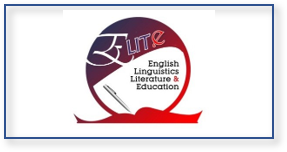Character Development in Reading Folktales: Literacy Learning Strategies Using Propp’s Dramatis Personae and Narrative Functions in Princess Hase
Keywords:
character development in reading, dramatis personae, folktales, literacy strategies, narrative functionsAbstract
This study intended to explore one of the literacy learning strategies namely character development in reading that can be used in the classroom by combining with Propp’s dramatis personae framework to get the deeper understanding about the folktales. This study involved the Japanese Folktale entitled Princess Hase as this story contains moral value that can be obtained by students after reading the folktales. This study used qualitative descriptive method which emphasizes on dramatis personae that exist in the folktales to get the deeper understanding. This study found out that the application of Propp’s dramatis personae in analyzing folktales can make the readers easier in understanding the folktales. Moreover, the combination of literacy learning strategies in this case character development in reading with Propp’s dramatis personae is beneficial to be applied in the classroom.
Downloads
References
Ajie, P., & Mustofa, A. (2014). The Comparative Study of Jack and The Beanstalk and Momotaro: Propp's 31 Functions on Folktales. Language and Horizon. Vol.02, No.01. https://doi.org/10.26740/lk.v2i1.7915.
Azis, M. S., Mahsun, & Mahyudi, J. (2022). Distribusi Fungsi Di Antara Dramatik Persona Dalam Doyan Neda Perspektif Vladimir Propp. Jurnal Ilmiah Mandala Education (JIME), Vol. 8, No.2, pp.1737-1747.
Carter, R. (1997). Investigating English Discourse: Language, Literacy and Literature. London: Routledge.
Chamot, A. U., & El-Dinary, P. B. (1999). Children’s Learning Strategies in Language Immersion Class-rooms. The Modern Language Journal Vol. 83(3), pp.319-338.
Hafsah, S. (2018). The Blade of The Youngest Princess: The Eastern Kalimantan Folklore in The Analysis of Vladimir Propp's Narrative Structure. Ethical Lingua Journal of Language Teaching and Literature, Vol.5, No.1, pp.83-94.
Khaerianti. (2009). The Folktales of Lombok: Fairy Tales of Cupak Gerantang, Sandubaya and Lala Seruni, And Cilinayaa Narrative Structural Review of Vladimir Propp. Jurnal EducatiO, Vol.4, No.1, pp.13-31.
Kucer, S. B., & Silva, C. (2006). Teaching The Dimansions of Literacy. New Jersey: Lawrence Erlbaum Associates, Publishers.
Lahlou, K. (2017). An Attempt at Applying Vladimir Propp’s Morphology of the Folktale on Charles Dicken's Great Expectations. AWEJ for translation & Literacy Studies. Vol 1. No. 3, pp.106-12.
Ozaki, Y. T. (1903). The Japanese Fairy Book. Westminister: Archibald Constable & Co. Ltd.
Propp, V. (1968). Morphology of the Folktale. Texas: University of Texas Pres.
Propp, V. (1984). Theory and History of Folklore. Minneapolis: University of MInessota Press.
Putra, E. E. (2022). Propp Morphological Analysis on Ready Player One Novel: An Attempt at Defining Sci-FI Fiction. Lingua Didaktika Jurnal Bahasa dan Pembelajaran Bahasa. Vol.15, No.2, pp.118-131.
Taylor, S. J., Bogdan, R., & DeVault, M. L. (2016). Introduction to Qualitative Research Methods 4th Edition. New Jersey: John Wiley & Sons, Inc.
Yulistya, D. H., & Astuti, R. B. (2022). Narrative Function of Vladimir Propp in John Green's Novel, The Fault in Our Stars. International Journal of English and Applied Linguistics, Vol.2, No.1, pp.168-178.










